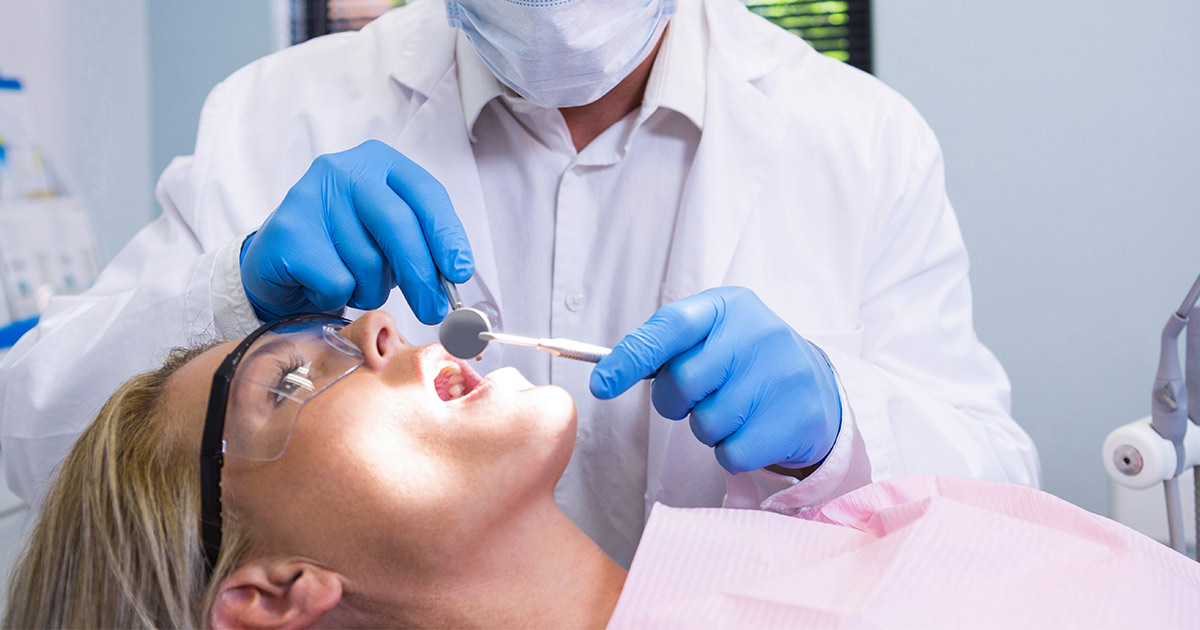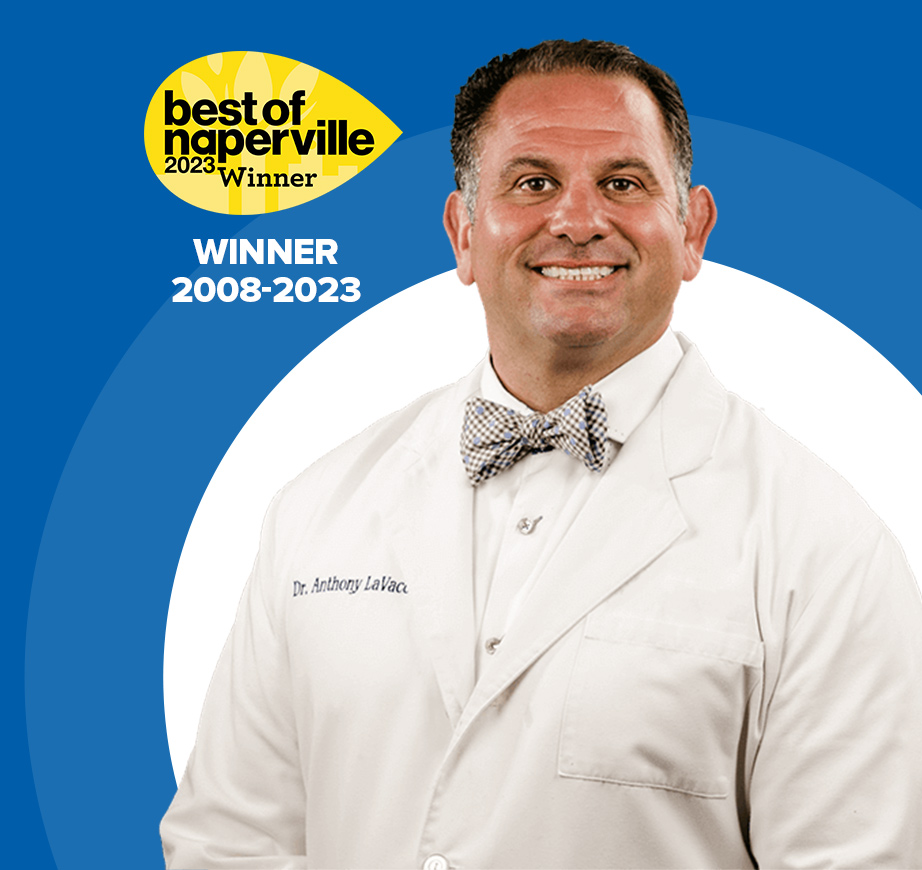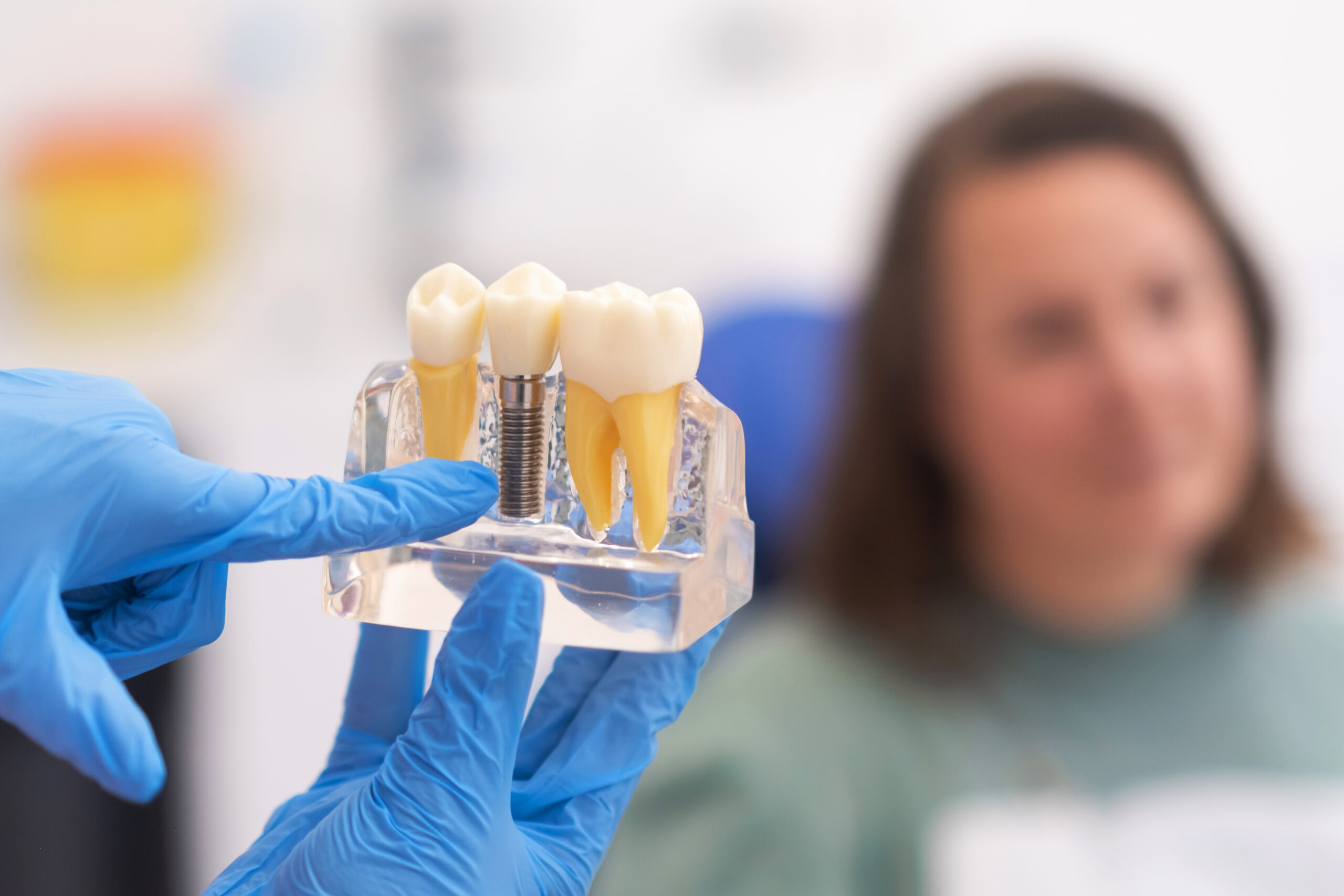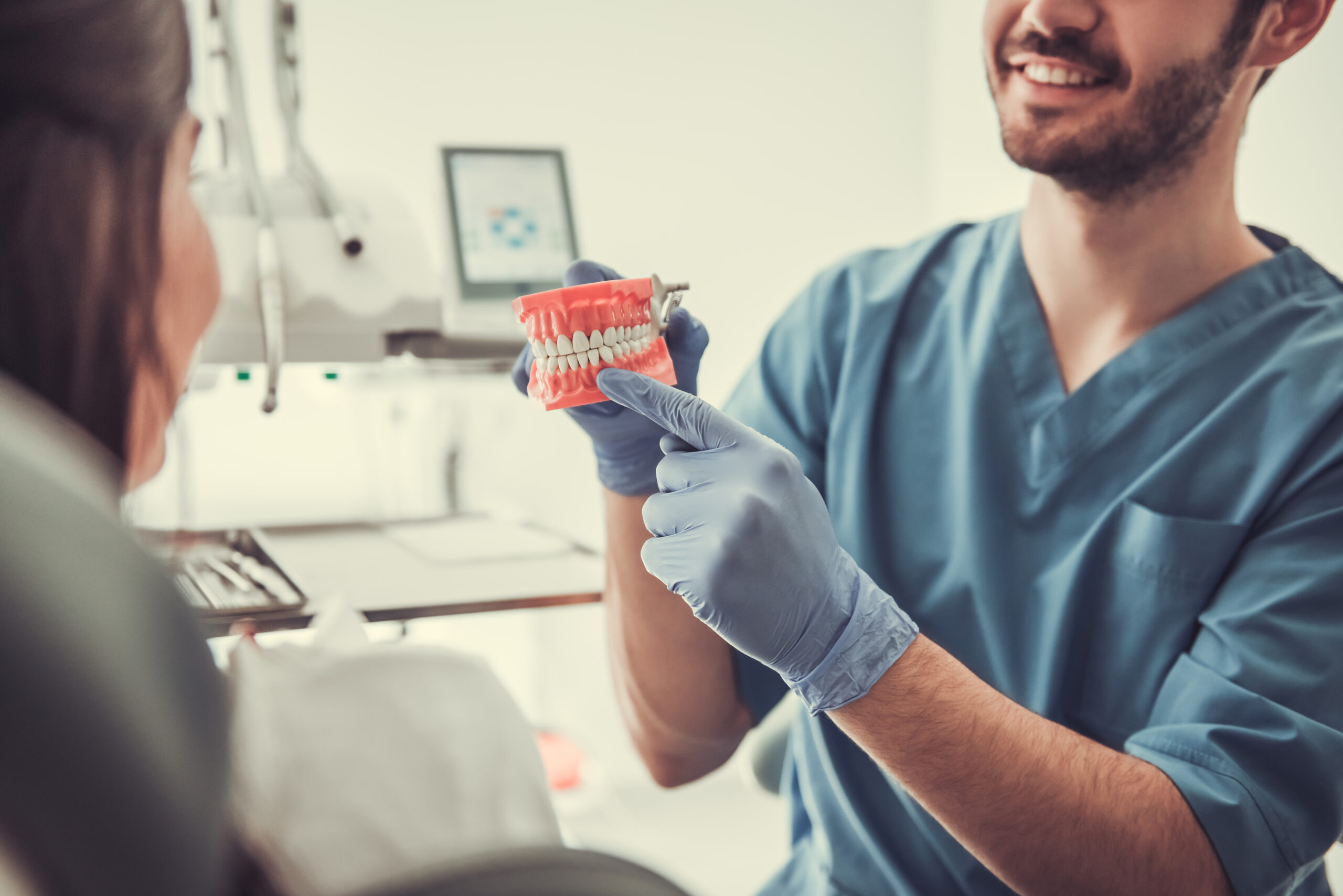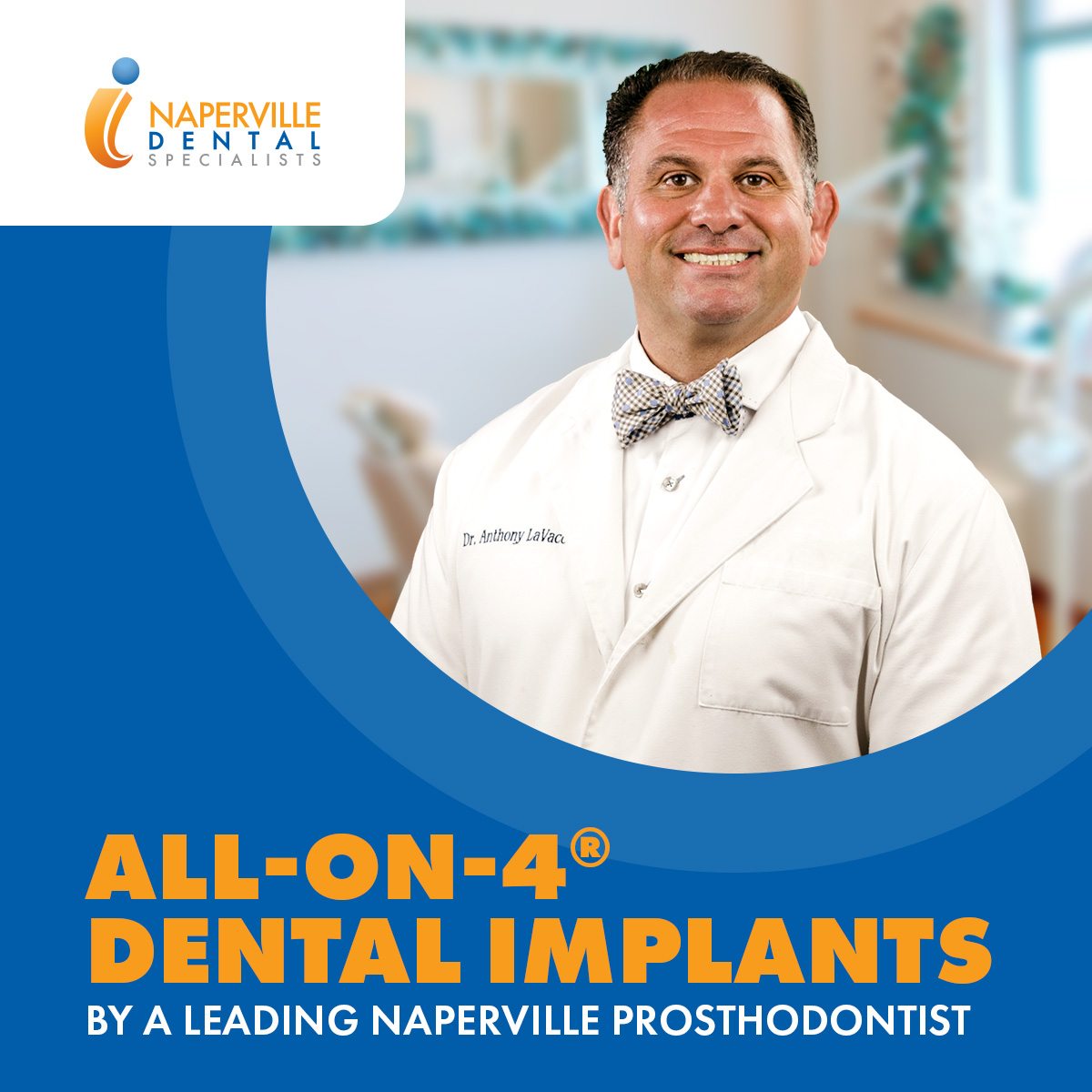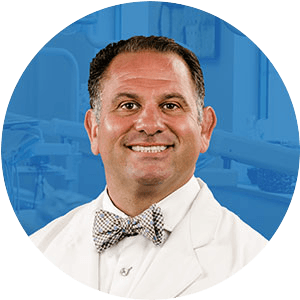Have you ever looked in the mirror and thought, “Why are my teeth see through?” You might be wondering if it’s something that just happens naturally as you get older or if it’s a sign of a dental problem.
Our expert Naperville dentists have answers. In this post, we’ll be exploring the causes of see-through teeth, how the issue can be prevented and the ways Naperville Dental Specialists can restore your smile’s radiance.
Tooth Structure: The Basics
To understand the reason behind transparent teeth, let’s first cover the basics of tooth structure. Each tooth consists of multiple layers, including the protective outer layer called enamel. Enamel, which is made up of minerals, gives teeth their strength and glossy appearance. While enamel naturally has some translucency, it usually appears opaque due to the underlying layers of dentin and pulp.
What Causes Teeth to Look See Through?
Transparent teeth are caused by enamel erosion. You might notice you can see through the bottom of the teeth and along the outer edges. This is because the underlying layer of dentin doesn’t reach all of the way to the edges of the teeth, so these areas are composed solely of enamel. As the enamel thins, it becomes translucent. If enamel loss spreads to the rest of the tooth, those sections will look yellowish or grayish, because there is dentin underneath that is now exposed.
So, what causes enamel erosion? Any of the following can contribute to enamel loss:
Acidic Foods and Drinks
Drinking a lot of acidic beverages, such as energy drinks, soda and coffee, and regularly eating acidic foods like citrus fruits and candy can wear down the enamel. The more frequently you have these types of foods and drinks, the more pronounced acid erosion will be.
Soda and sports drinks are especially harmful. Most soft drinks and sports beverages are high in sugar and they contain enamel-dissolving acids. Unfortunately, according to research, diet sodas are nearly as erosive as their sugar-filled counterparts.
Tooth Wear and Abrasion
Physical enamel erosion is another common culprit. Brushing the teeth with too much force or using a hard-bristle toothbrush or abrasive toothpaste will strip away the tooth’s surface.
Teeth grinding and clenching (bruxism), using your teeth as tools and habits like biting your fingernails or chewing on ice can have the same effect. While at first you’ll be able to see through the bottom of the teeth, eventually, these weakened spots can chip and stain from the continued force.
Medical Conditions
Conditions like heartburn and acid reflux and those that lead to frequent vomiting, such as bulimia and morning sickness, regularly expose the teeth to corrosive stomach acid. The enamel thins, causing transparency, as well as yellowing wherever dentin is exposed. Celiac disease may also result in see-through teeth because it can interfere with enamel formation while the teeth are developing.
Enamel Hypoplasia
Enamel hypoplasia occurs when tooth development is interrupted and the enamel is very thin or, in some cases, non-existent. The condition can impact the primary teeth or permanent teeth. Because the teeth don’t have adequate enamel coverage, they’re vulnerable to erosion, transparency and decay.
Dry Mouth
Dry mouth, technically called xerostomia, can be caused by medications, medical conditions, dehydration and more. Saliva is crucial for neutralizing acids in the mouth, remineralizing the teeth, washing away food and plaque and limiting bacteria. If dry mouth is chronic and you’re consistently not producing enough saliva, enamel loss and tooth decay will occur.
Diet High in Sugar and Starches
The bacteria in the mouth feed on sugars and starches, and when they do, they release acids. The acid byproduct forms plaque, which further eats away at tooth enamel. That’s why eating a diet high in sugar and simple starches increases your risk for transparent teeth.
Genetic Factors
Some people inherit genes that predispose them to thinner enamel. This makes them much more susceptible to acid erosion and wear and tear.
Preventing Translucent Teeth
Prevention is key when it comes to maintaining the opacity of your teeth. To keep enamel erosion at bay:
- Practice proper oral hygiene – Use a fluoride toothpaste to strengthen enamel. Brush teeth gently with a soft-bristled toothbrush at least twice a day. Floss once daily to remove food bits and acid-producing plaque from in between the teeth and under the gumline.
- Eat a healthy, well-rounded diet that’s low in sugar – Stick to as many whole and minimally processed foods as possible and enjoy sugar and simple carbohydrates in moderation. When you do have a treat, eat it one sitting, preferably with a larger meal.
- Snack less often – Frequent snacking or sipping prolongs your enamel’s exposure to the acid byproduct from oral bacteria.
- Watch your acidic foods and drinks – Avoid sodas and sports drinks, or at least minimize your intake, and have things like fruit juice and coffee in moderation. After eating or drinking something acidic, wait about an hour before brushing your teeth. Brushing immediately after eating or drinking will damage enamel while it’s in a temporarily weakened state.
- Manage health conditions – If acid reflux, bulimia or another condition is causing enamel loss and tooth transparency, speak with your doctor. Getting the condition under control will go a long way in keeping your teeth strong.
And just like after eating or drinking something acidic, avoid brushing your teeth for an hour after vomiting or suffering from a bout of reflux. While you’re waiting, you can rinse with a fluoride mouthwash or dissolve a tablespoon of baking soda in eight ounces of water and swish it around in your mouth. This will get rid of the bad taste and neutralize acidity.
- Quit harmful oral habits – Stopping harmful oral habits or getting treatment for bruxism will reduce tooth damage.
- Banish dry mouth – If a medication or medical concern is causing dry mouth, speak with your doctor about your options. Also be sure to stay hydrated and rinse your mouth with water after eating. Try chewing sugarless gum or sucking on a sugar-free lozenge after meals or whenever your mouth feels dry to promote the flow of saliva.
- Regular dental check-ups and cleanings – During routine dental exams and cleanings, we’re able to detect enamel erosion in its earliest stages. Remineralization treatments, like a professional fluoride treatment, and guidance on homecare, diet and oral habits can stop erosion from progressing.
How to Fix See-Through Teeth
Home Remedies for Enamel Erosion
You can’t grow new enamel, however, you can strengthen your remaining enamel by focusing your efforts on remineralization. To promote remineralization, use fluoride toothpaste and eat a smile-friendly diet that includes foods rich in calcium and phosphorus.
While some people claim there are natural solutions to combat tooth transparency, there isn’t scientific evidence to support them. That’s why it’s important to approach these remedies with caution and always get professional guidance.
Dental Treatments for Transparent Teeth
The best way to fix see-through teeth is to visit your dentist. At Naperville Dental Specialists, we offer a range of cosmetic and restorative dentistry services to address enamel erosion and improve the appearance, strength and health of your smile. Two effective treatments include dental bonding and porcelain veneers.
Dental bonding is an affordable, non-invasive way to replace lost enamel. Your dentist applies a thin layer of tooth-colored composite resin to the areas of your tooth, or teeth, where enamel is thin. They then use a curing light to harden the resin before applying another layer. This process is repeated until the desired thickness is achieved.
When complete, the dentist shapes and polishes the composite resin so that it blends in seamlessly with your natural enamel. The material creates a strong bond with your tooth. While it can last for years, cosmetic dental bonding doesn’t last as long as a permanent restoration like porcelain veneers.
Porcelain veneers are a long-lasting, highly effective way to transform your smile. Whether transparent teeth are your only concern or you have multiple cosmetic flaws you’d like to fix, veneers could be a great option.
Your Naperville cosmetic dentist will take digital scans of your mouth and design custom veneers to create the ideal shape and color. Your veneers will be fabricated from natural-looking, durable porcelain. The wafer thin shells will then be bonded to your teeth, covering translucency, discoloration, chips and cracks, wear and even minor spacing or crowding.
While the dentist does need to remove a small amount of enamel to fit the veneers, the procedure is painless and preserves much more of your natural tooth structure as compared to treatments like dental crowns.
Restore Your Teeth With General and Cosmetic Dentistry in Naperville, IL
Now that you know enamel erosion is the reason why you can see through your teeth, are you ready to explore solutions? At Naperville Dental Specialists, our experienced dentists provide high-tech, personalized care to improve your oral health and confidence. They’ll determine the underlying cause of your enamel loss and create an individualized treatment plan to help you reclaim your smile.
Schedule a visit today!


